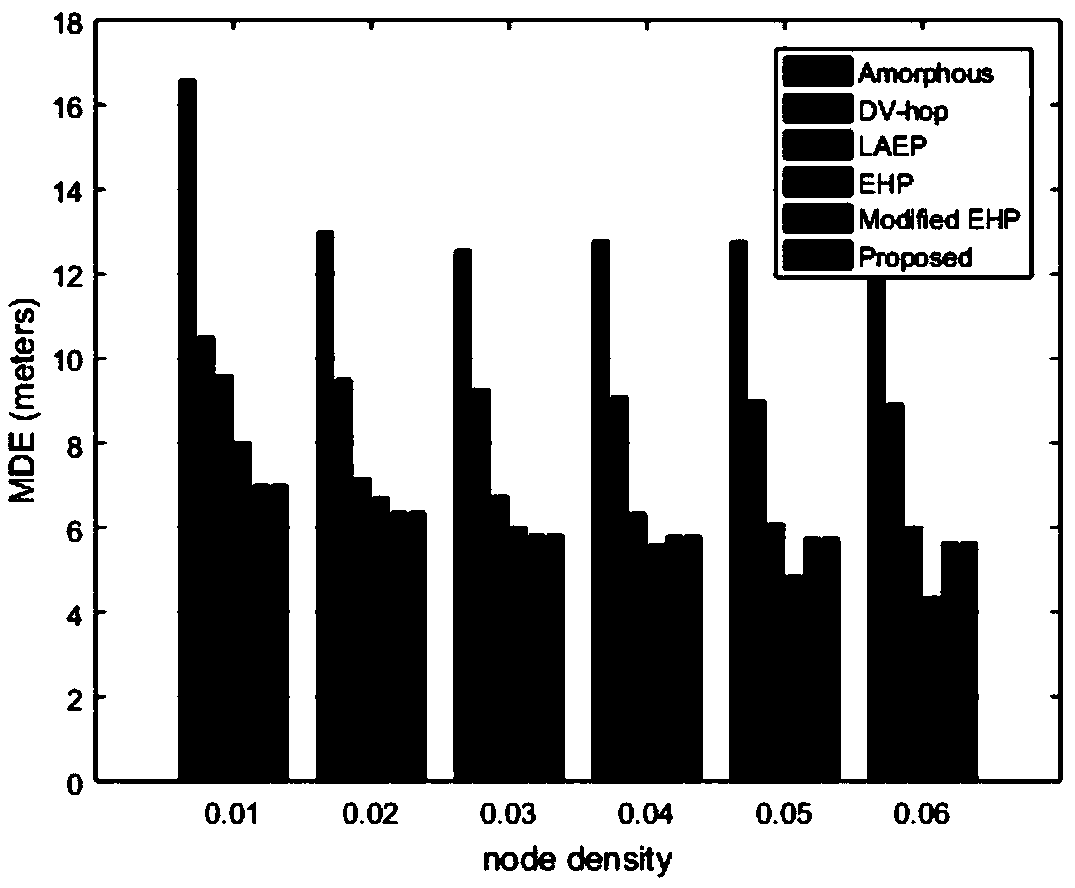Positioning algorithm of heterogeneous wireless sensor network based on support vector regression
A support vector regression, wireless sensor technology, applied in satellite radio beacon positioning systems, location-based services, network planning and other directions, can solve problems such as high positioning accuracy
- Summary
- Abstract
- Description
- Claims
- Application Information
AI Technical Summary
Problems solved by technology
Method used
Image
Examples
Embodiment Construction
[0026] In order to further understand the content, characteristics and effects of the present invention, the following examples are given, and detailed descriptions are given below with reference to the accompanying drawings. It should be noted that this embodiment is descriptive, not restrictive, and cannot thereby limit the protection scope of the present invention.
[0027] A wireless sensor network positioning algorithm based on support vector regression machine, using the classic EHP method as the ranging formula (1), from the formula (1), it can be seen that the distance between two nodes includes E(d i-k ) and E(d k-j ), where E(d i-k ) represents the expected hop progress (Expected Hop progress, EHP), that is, the sum of the first hop distance and the middle hop distance; Represents the last-hop distance (Last-Hop Distance, LHD), and the precise distance matrix in the heterogeneous wireless sensor network is obtained by formula (1),
[0028]
[0029] Applying th...
PUM
 Login to View More
Login to View More Abstract
Description
Claims
Application Information
 Login to View More
Login to View More - R&D
- Intellectual Property
- Life Sciences
- Materials
- Tech Scout
- Unparalleled Data Quality
- Higher Quality Content
- 60% Fewer Hallucinations
Browse by: Latest US Patents, China's latest patents, Technical Efficacy Thesaurus, Application Domain, Technology Topic, Popular Technical Reports.
© 2025 PatSnap. All rights reserved.Legal|Privacy policy|Modern Slavery Act Transparency Statement|Sitemap|About US| Contact US: help@patsnap.com



